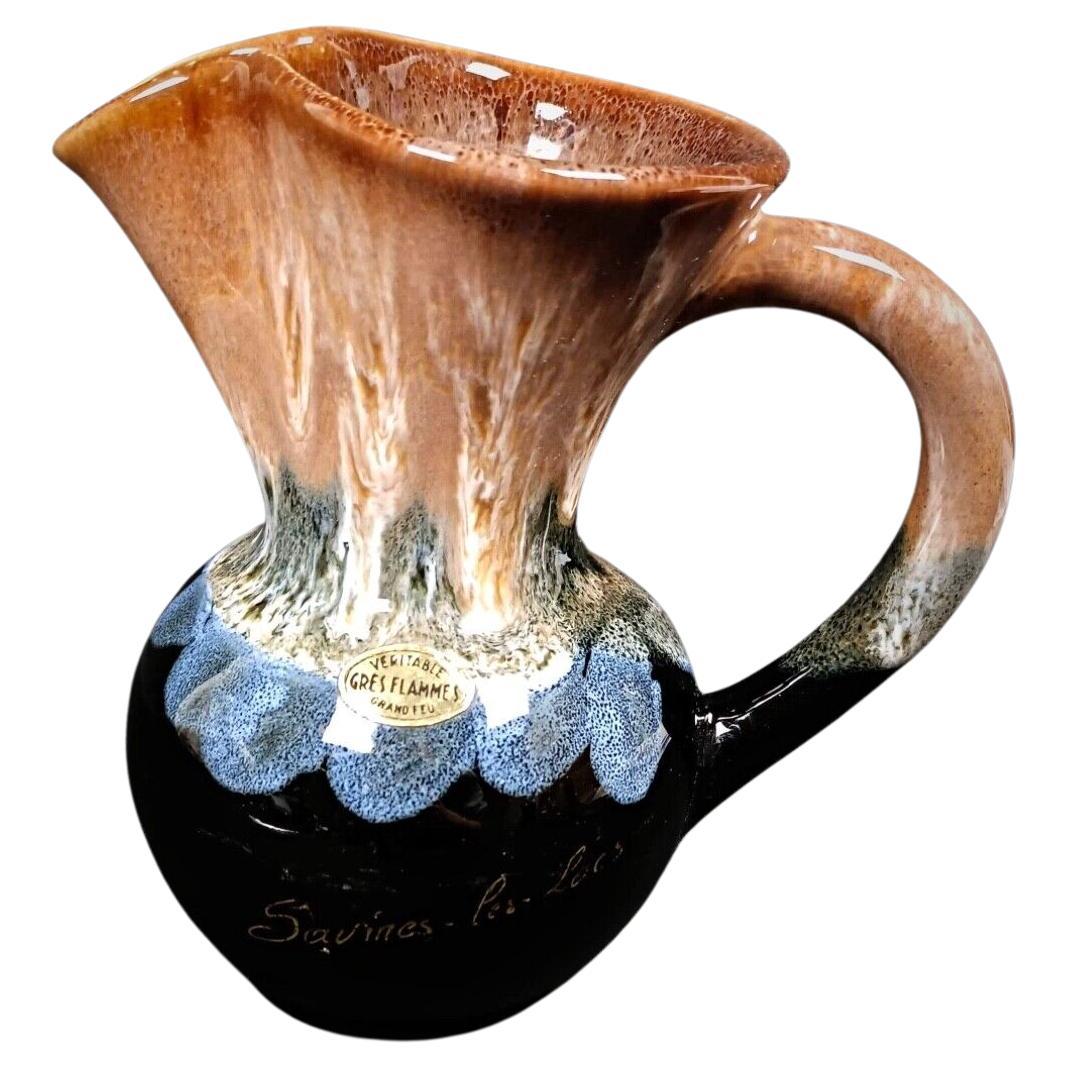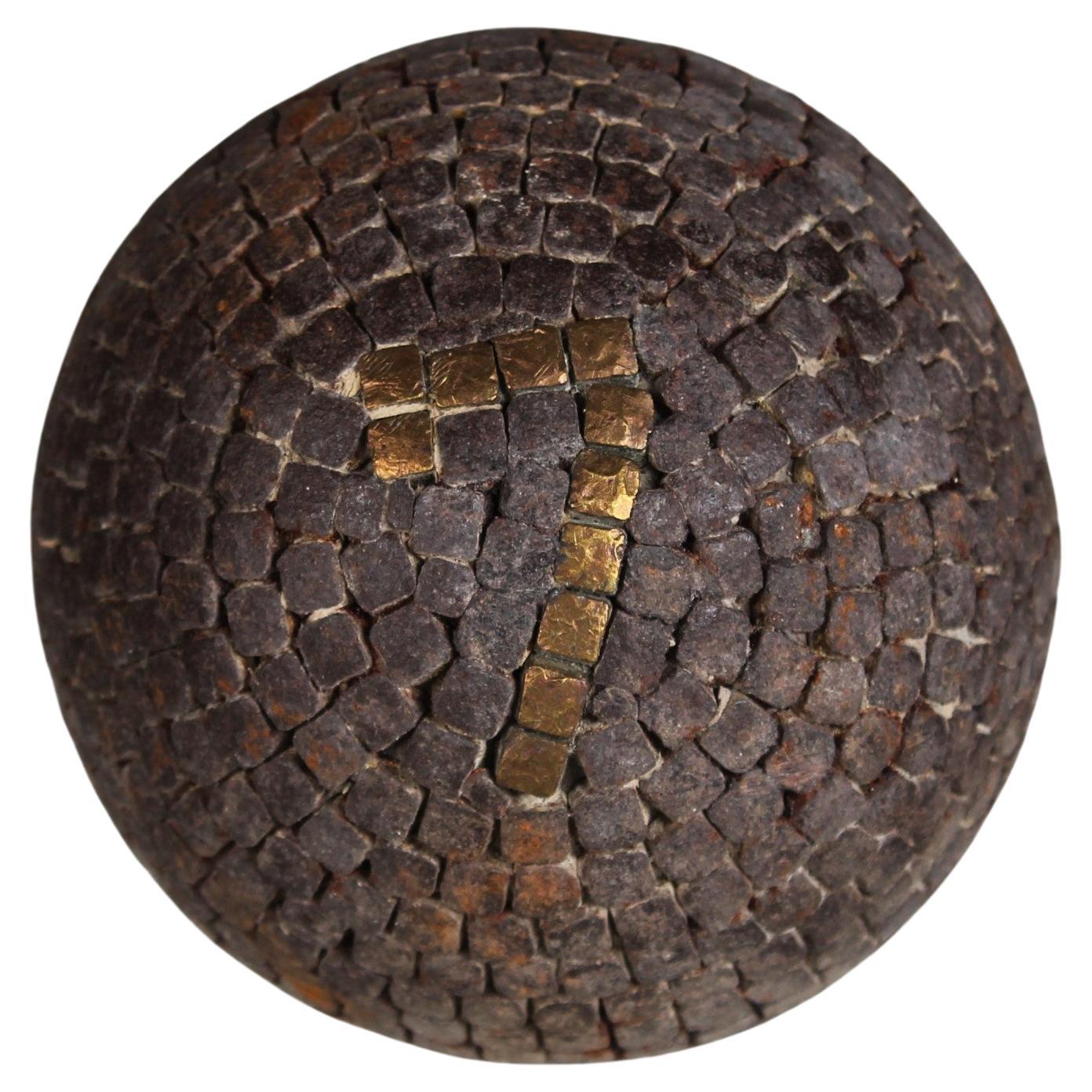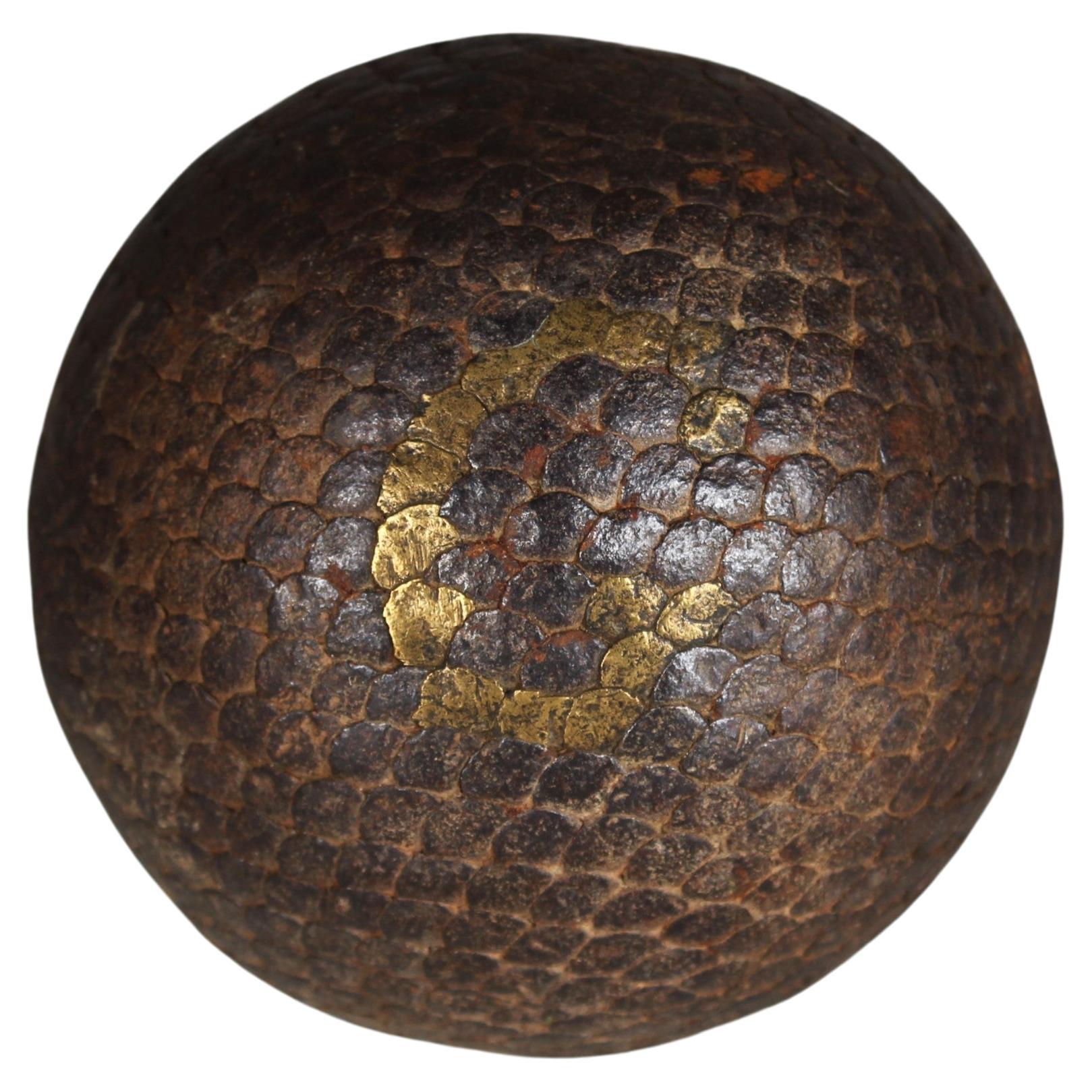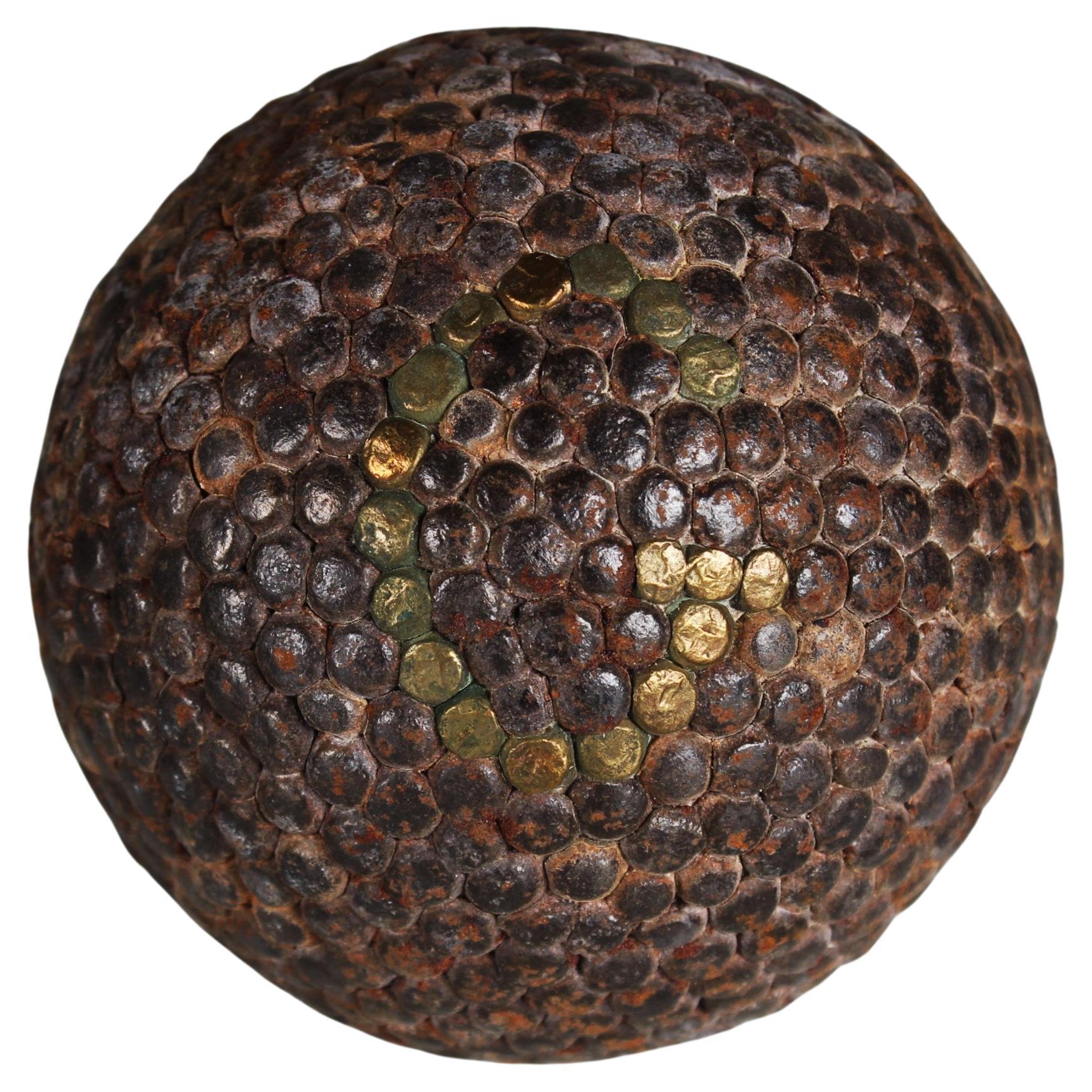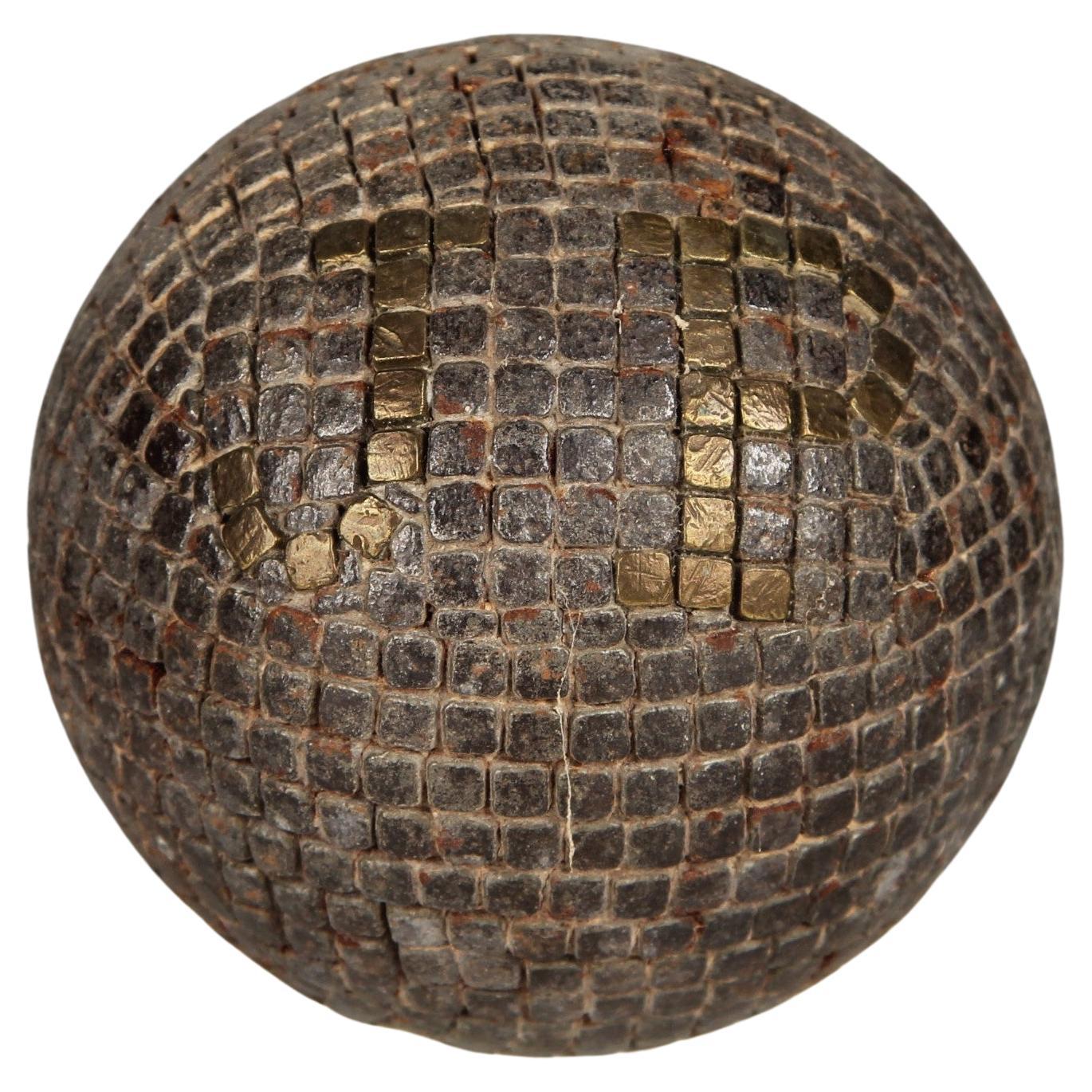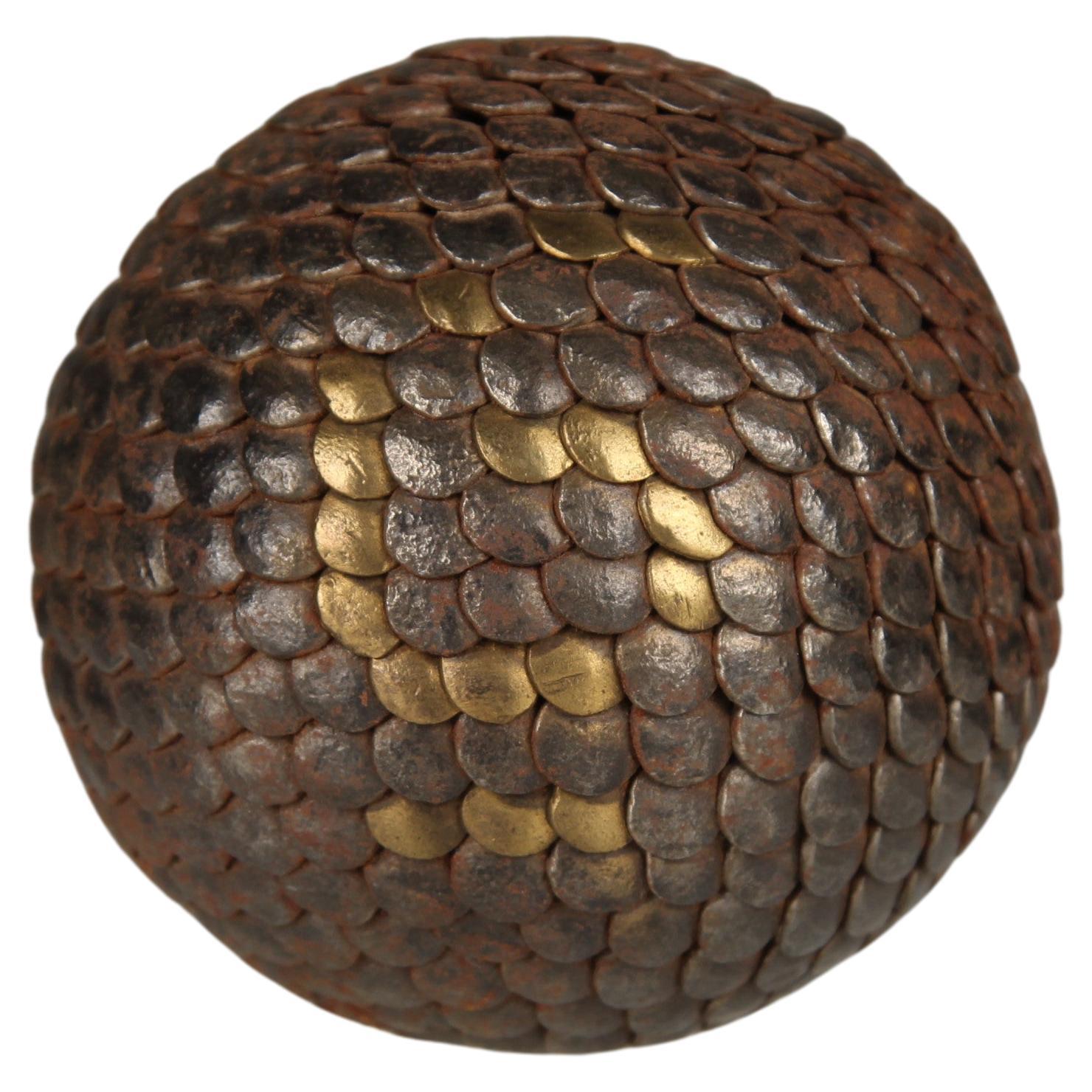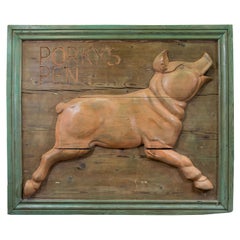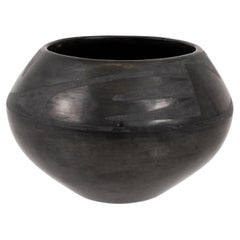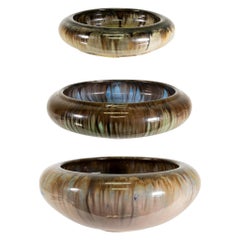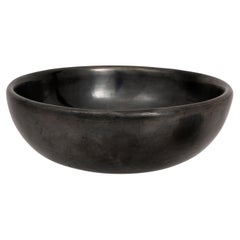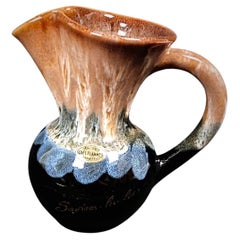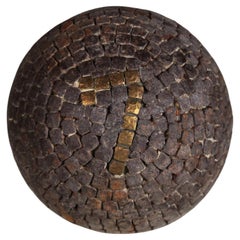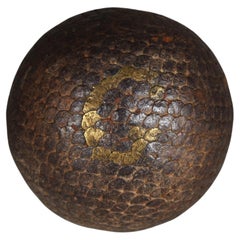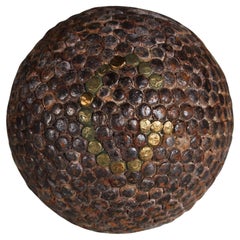Items Similar to Genuine 1880s Albany Slip Glazed Anna Pottery Stoneware Pig Flask
Want more images or videos?
Request additional images or videos from the seller
1 of 5
Genuine 1880s Albany Slip Glazed Anna Pottery Stoneware Pig Flask
About the Item
Albany slip glazed Anna pottery stoneware pig flask by Wallace and Cornwall Kirkpatrick, Anna. Anatomically correct prone pig. In sized inscriptions "Fine Old Burmann Inn" and alongside "Lard Oil Drill". Underside flask opening under tail. Anna Pottery was s operative by the Kirkpatrick brothers between 1859 and 1896. They took part in art exhibitions such as Philadelphia Centennial in 1876 and the World's Columbian Exposition in Chicago 1893. In 1938 the first inscription of Anna pottery was published in the New York Historical Society. Pieces of Anna pottery pigs can be found in several museums in the United States, including the Anna Kirkpatrick Pottery Museum and the Union County Museum in Southern Illinois. They can also be found in private art collections, often going up into the $40,000 range at auctions.
Period: 1880s
Origin: Illinois
Size: 6 1/2" L x 3 1/2" H.
Family Owned & Operated
Cisco’s Gallery deals in the rare, exceptional, and one-of-a-kind pieces that define the history of America and the Old West. Our pieces range from American Indian to Cowboy Western and include original items of everyday life, commerce, art, and warfare that tamed America’s frontier. Our 14,000 square foot gallery opened in 1996 in beautiful Coeur d’Alene, Idaho.
Personal Service
Cisco’s operates on old fashioned values – honesty and integrity, and all of our items are backed by our money back guarantee. We appreciate the opportunity to earn your business. Whether you desire assistance with a jewelry purchase, choosing a gift, identification, or even selling – we hope to be your trusted source.
- Dimensions:Height: 3.5 in (8.89 cm)Width: 6.5 in (16.51 cm)Depth: 3.5 in (8.89 cm)
- Materials and Techniques:
- Place of Origin:
- Period:
- Date of Manufacture:1880
- Condition:Wear consistent with age and use.
- Seller Location:Coeur d'Alene, ID
- Reference Number:Seller: AF04991stDibs: LU4019323490042
About the Seller
5.0
Vetted Professional Seller
Every seller passes strict standards for authenticity and reliability
Established in 1996
1stDibs seller since 2018
242 sales on 1stDibs
Typical response time: 5 hours
- ShippingRetrieving quote...Shipping from: Coeur d'Alene, ID
- Return Policy
Authenticity Guarantee
In the unlikely event there’s an issue with an item’s authenticity, contact us within 1 year for a full refund. DetailsMoney-Back Guarantee
If your item is not as described, is damaged in transit, or does not arrive, contact us within 7 days for a full refund. Details24-Hour Cancellation
You have a 24-hour grace period in which to reconsider your purchase, with no questions asked.Vetted Professional Sellers
Our world-class sellers must adhere to strict standards for service and quality, maintaining the integrity of our listings.Price-Match Guarantee
If you find that a seller listed the same item for a lower price elsewhere, we’ll match it.Trusted Global Delivery
Our best-in-class carrier network provides specialized shipping options worldwide, including custom delivery.More From This Seller
View All1900s Butcher's Pig Trade Sign
Located in Coeur d'Alene, ID
Vintage carved and painted pine butcher's trade sign. Molded frame, insized text reading "Porkies Pen" pig in relief. 33" x 40"
Period: First quarter of the 20th century or earlier
...
Category
Early 20th Century French Antiquities
Materials
Wood
Maria Martinez Black Ware Pottery Jar
By Navajo
Located in Coeur d'Alene, ID
Black on black pottery jar by Marie Martinez, signed Marie. 1943 - 1956; 4" x 6"
San Ildefonso Pueblo, New Mexico, are internationally renowned 20th-cen...
Category
Mid-20th Century American Native American Pottery
Materials
Clay
Set of Three Antique Fulper Pottery Bowls
By Fulper Pottery
Located in Coeur d'Alene, ID
Set of three Fulper Pottery bowls. All signed on the bottom. Measures: 11" x 2 1/2"; 11" x 2 1/2"; 9" x 2"
Fulper Pottery was incorporated in 1899 although the company was well esta...
Category
Vintage 1910s Pottery
Materials
Pottery
$2,000 / set
Maria Poveka Martinez Black Ware Pottery Bowl
By Navajo
Located in Coeur d'Alene, ID
Black on black pottery bowl with gunmetal finish, signed Maria Poveka. 1956 - 1965; 7 3/4" x 2 3/4". San Ildefonso Pueblo, New Mexico, are internationally renowned 20th-century Ameri...
Category
Mid-20th Century American Native American Pottery
Materials
Clay
Large Maria Martinez Black Ware Pottery Jar
By Navajo
Located in Coeur d'Alene, ID
Black on black pottery vase with gunmetal finish, geometric band decorated shoulder; unusual style. Signed Marie. Collected circa 1930 by Clara Kingsley. 6" x 10".
San Ildefonso Pue...
Category
Mid-20th Century American Native American Pottery
Materials
Clay
$9,000 / item
Maria Poveka Martinez Black Ware Pottery Jar
By Navajo
Located in Coeur d'Alene, ID
Black on black pottery jar with gunmetal finish, signed Maria Poveka. 1956 - 1965; 6" x 8". San Ildefonso Pueblo, New Mexico, are internationally renowned 20th-century American potte...
Category
Mid-20th Century American Native American Pottery
Materials
Clay
You May Also Like
Pitcher "Savines les Lacs" Genuine High-Fired Flame Glazed Stoneware - 2Y210
Located in Bordeaux, FR
This charming pitcher, carafe, or jug from "Savines les Lacs" is crafted from genuine high-fired flame-glazed stoneware. It boasts a rustic yet elegant design, making it a versatile ...
Category
20th Century French Empire Antiquities
Materials
Stoneware
$297 Sale Price
20% Off
Antique Boule Ball "7", Pétanque, 1880s, France, Craftsmanship
Located in Greven, DE
Beautiful, unique Boule ball, France, late 19th Century.
In the 19th century, the manufacture of boules balls underwent significant development in France as the game of boules, particularly the pétanque variant, gained in popularity. The manufacture of boules balls during this period was a manual process that required expertise, precision and love to detail.
In the late 19th and early 20th centuries, particularly in rural areas of France and other Mediterranean regions, olive wood was a commonly used source of material for making boules balls. This was not only due to the availability of the material, but also to the outstanding properties of olive wood, which was characterized by hardness, strength and a rich grain.
First, the olive wood was carefully selected and shaped into raw balls, which were then sanded to the desired size and shape. The nails were then hammered into the balls one by one, making sure that they were evenly distributed and firmly anchored. Finally, the spheres were polished and coated with a protective varnish to enhance their natural beauty and protect them from the elements.
The use of nails to decorate and reinforce olive wood boules was a traditional practice that not only gave the ball a rustic aesthetic, but also improved its durability and contributed to customization. Many balls were made according to the specific requirements and preferences of the players. Nails were driven at regular intervals around the ball, with each nail hole precisely placed so as not to affect the balance and weight distribution of the ball. These nails not only served as a decorative element, but also helped to strengthen the structure of the ball and make it more resistant to the hard knocks and wear and tear during play. Individual engravings or decorations were often applied to the balls to make them unique and identify the player.
Antique boules...
Category
Antique Late 19th Century French Late Victorian Antiquities
Materials
Metal
Antique Boule Ball "G", Pétanque, 1880s, France, Craftsmanship
Located in Greven, DE
Beautiful, unique Boule ball, France, late 19th Century.
In the 19th century, the manufacture of boules balls underwent significant development in France as the game of boules, particularly the pétanque variant, gained in popularity. The manufacture of boules balls during this period was a manual process that required expertise, precision and love to detail.
In the late 19th and early 20th centuries, particularly in rural areas of France and other Mediterranean regions, olive wood was a commonly used source of material for making boules balls. This was not only due to the availability of the material, but also to the outstanding properties of olive wood, which was characterized by hardness, strength and a rich grain.
First, the olive wood was carefully selected and shaped into raw balls, which were then sanded to the desired size and shape. The nails were then hammered into the balls one by one, making sure that they were evenly distributed and firmly anchored. Finally, the spheres were polished and coated with a protective varnish to enhance their natural beauty and protect them from the elements.
The use of nails to decorate and reinforce olive wood boules was a traditional practice that not only gave the ball a rustic aesthetic, but also improved its durability and contributed to customization. Many balls were made according to the specific requirements and preferences of the players. Nails were driven at regular intervals around the ball, with each nail hole precisely placed so as not to affect the balance and weight distribution of the ball. These nails not only served as a decorative element, but also helped to strengthen the structure of the ball and make it more resistant to the hard knocks and wear and tear during play. Individual engravings or decorations were often applied to the balls to make them unique and identify the player.
Antique boules...
Category
Antique Late 19th Century French Late Victorian Antiquities
Materials
Metal
Antique Boule Ball "G", Pétanque, 1880s, France, Craftsmanship
Located in Greven, DE
Beautiful, unique Boule ball, France, late 19th Century.
In the 19th century, the manufacture of boules balls underwent significant development in France as the game of boules, particularly the pétanque variant, gained in popularity. The manufacture of boules balls during this period was a manual process that required expertise, precision and love to detail.
In the late 19th and early 20th centuries, particularly in rural areas of France and other Mediterranean regions, olive wood was a commonly used source of material for making boules balls. This was not only due to the availability of the material, but also to the outstanding properties of olive wood, which was characterized by hardness, strength and a rich grain.
First, the olive wood was carefully selected and shaped into raw balls, which were then sanded to the desired size and shape. The nails were then hammered into the balls one by one, making sure that they were evenly distributed and firmly anchored. Finally, the spheres were polished and coated with a protective varnish to enhance their natural beauty and protect them from the elements.
The use of nails to decorate and reinforce olive wood boules was a traditional practice that not only gave the ball a rustic aesthetic, but also improved its durability and contributed to customization. Many balls were made according to the specific requirements and preferences of the players. Nails were driven at regular intervals around the ball, with each nail hole precisely placed so as not to affect the balance and weight distribution of the ball. These nails not only served as a decorative element, but also helped to strengthen the structure of the ball and make it more resistant to the hard knocks and wear and tear during play. Individual engravings or decorations were often applied to the balls to make them unique and identify the player.
Antique boules...
Category
Antique Late 19th Century French Late Victorian Antiquities
Materials
Metal
Antique Boule Ball "J P", Pétanque, 1880s, France, Craftsmanship
Located in Greven, DE
Beautiful, unique Boule ball, France, late 19th Century.
In the 19th century, the manufacture of boules balls underwent significant development in France as the game of boules, part...
Category
Antique Late 19th Century French Late Victorian Antiquities
Materials
Metal, Brass
Antique Boule Ball "6", Pétanque, 1880s, France, Craftsmanship
Located in Greven, DE
Beautiful, unique Boule ball, France, late 19th Century.
In the 19th century, the manufacture of boules balls underwent significant development in France as the game of boules, part...
Category
Antique Late 19th Century French Late Victorian Antiquities
Materials
Metal, Brass
Recently Viewed
View AllMore Ways To Browse
1876 Jewelry
Antique Furniture Cornwall
Annas Antiques
Pig Jewelry
Antique American Stoneware Pottery
Annas Antique Jewellery
Helmut Adler Flatware
Helmut Adler
Heltborg Mobler Nest Of Tables
Heltborg M�bler On Sale
Hemingway Bed
Henkel Harris Banded Dining Table
Henkel Harris Drop Leaf End Table
Henkel Harris Lingerie Chest
Henkel Harris Silver Chest
Henkel Harris Two Piece Breakfront
Henredon Artefacts Coffee Table
Henredon Artefacts Headboard
